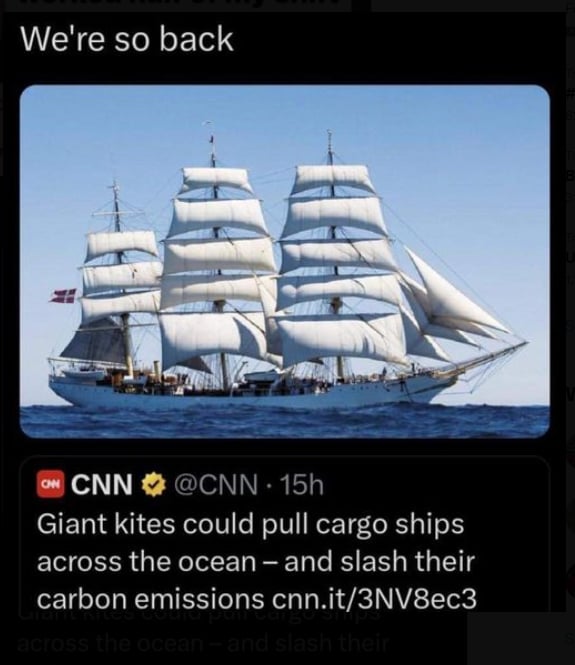this post was submitted on 18 Feb 2024
845 points (97.8% liked)
Funny: Home of the Haha
6235 readers
604 users here now
Welcome to /c/funny, a place for all your humorous and amusing content.
Looking for mods! Send an application to Stamets!
Our Rules:
-
Keep it civil. We're all people here. Be respectful to one another.
-
No sexism, racism, homophobia, transphobia or any other flavor of bigotry. I should not need to explain this one.
-
Try not to repost anything posted within the past month. Beyond that, go for it. Not everyone is on every site all the time.
Other Communities:
-
/c/[email protected] - Star Trek chat, memes and shitposts
-
/c/[email protected] - General memes
founded 2 years ago
MODERATORS
you are viewing a single comment's thread
view the rest of the comments
view the rest of the comments

Modern cargo ships are so huge traditional sails wouldn't provide enough force to push them around. Neither will these kites, mind you. But, supplemental energy will still be a bonus, and a kite can reach higher and sit in faster, more stable winds.
Believe it or not, "proportionality" is a thing. You make the ship bigger, you make the sails bigger to match. Simple! Granted, previously, making sails bigger was limited by the weight of the things when hoisted by men operating manual winches, but now we've got motors now to solve that, and higher strength-to-weight ratio materials, too.
Point is: I maintain that, in principle, you could make a post-Panamax sailing ship -- even a traditional fully-rigged one -- if you really wanted to, and it would be capable of sailing at hull speed on wind power alone. It's just that they don't want to for reasons unrelated to technical feasibility.
You're assuming everything scales linearly, which is not necessarily accurate. The square-cube law rains on many people's parades.
Not really. Drag grows with area and so does force from a sail. The larger ships will be faster per unit volume if anything.